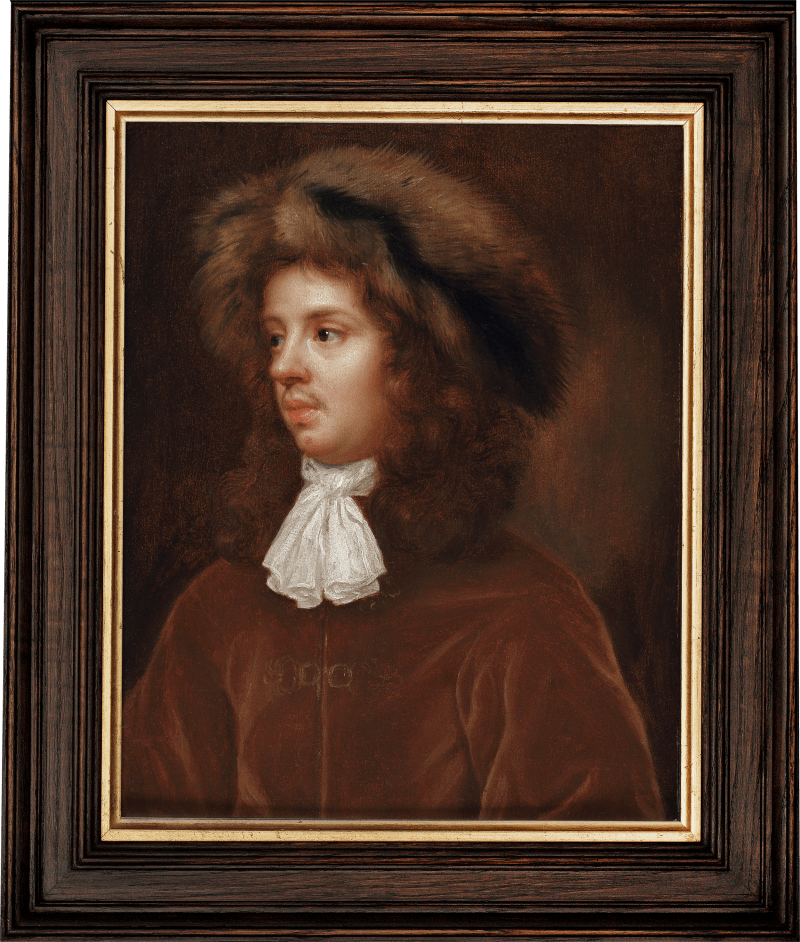As her reputation and popularity grew, Beale began to require studio assistants, in line with a practice common among the leading male artists of her era. It is thought that one of these young assistants, or an apprentice, is depicted in the present informal and reflective study.
It is well documented that Beale’s sons, Charles and Bartholomew, received remuneration for their contributions to the painting of drapery and the decorative cartouches that Beale often included in her bust-length portraits. The allocation of other responsibilities within the studio remains largely unchronicled, although at least five young women are recorded within the studio-household intermittently between 1672 and 1693; these were Kate Trioche, her sister Moll Trioche, Alice Woodforde, Katy Sandys and Sarah Curtis Hoadly.[1] Except, it appears, for Hoadly, they also served as models for Beale, although their individual likenesses are yet to be identified.
This portrait has been presumed to depict either Kate Trioche or Alice Woodforde, both of whom are...
As her reputation and popularity grew, Beale began to require studio assistants, in line with a practice common among the leading male artists of her era. It is thought that one of these young assistants, or an apprentice, is depicted in the present informal and reflective study.
It is well documented that Beale’s sons, Charles and Bartholomew, received remuneration for their contributions to the painting of drapery and the decorative cartouches that Beale often included in her bust-length portraits. The allocation of other responsibilities within the studio remains largely unchronicled, although at least five young women are recorded within the studio-household intermittently between 1672 and 1693; these were Kate Trioche, her sister Moll Trioche, Alice Woodforde, Katy Sandys and Sarah Curtis Hoadly.[1] Except, it appears, for Hoadly, they also served as models for Beale, although their individual likenesses are yet to be identified.
This portrait has been presumed to depict either Kate Trioche or Alice Woodforde, both of whom are recorded as having ‘side face’ portraits done in 1681.[2] That year, Trioche bought half an ounce of ultramarine from Charles Beale and, although little is known about her or the formalities of her relationship with Beale’s studio, this purchase might suggest that she had artistic ambitions of her own. Alice Woodforde was the daughter of the Beales’ close friend, the poet and Anglican divine Samuel Woodforde (1636–1700), and lived with the Beales following her mother’s death.
The portrait displays an interesting juxtaposition between the treatment of the drapery and the head. Although the costume appears to be contemporaneous with the face, its handling is noticeably generalized in comparison to the refined quality of the facial features. This stylistic discrepancy may well suggest the work of a collaborator, an unusual occurrence for Beale’s portraits for “study and improvement”, which appear primarily for her own technical practice.
[1] Draper 2020, p.203. Note: the spelling of names varies throughout Charles Beale’s notebooks.
[2] Beale, ‘Dairy 1680/1’.











